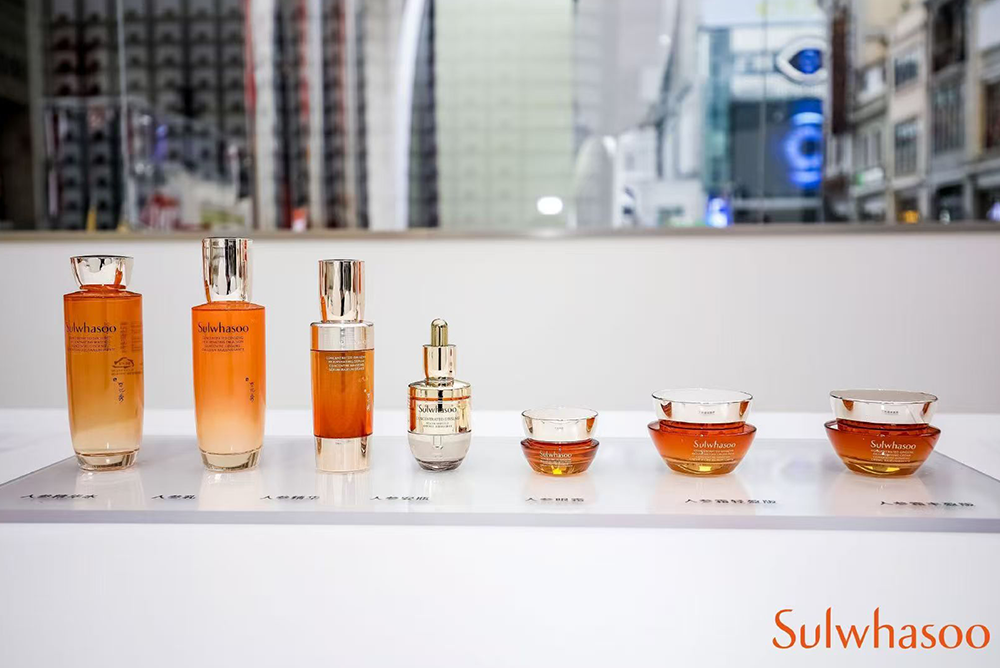- 2020-12-25
- 阅读量:2553
- 来源|
- 作者|Yang Xueling
How do you know if a cosmetic brand is truly popular? You sure can tell if consumers have a nickname for it.
What’s the furthest distance in the world?
According to the latest law in the cosmetic world, it’s not between life and death, nor when I stand in front of you, yet you can’t see my love. It’s when I’ve been longing for “little bulb” (SK-II GenOptics Aura Essence) and “999” (Rouge Dior 999), yet you give me a real bulb and 999 Compound Dexamethasone Acetate Cream.
If cosmetic brands wish to enter into and expand the Chinese market, there are easier and cleverer way than costly advertising, such as making the most of nicknames created by consumers.
01
Nicknames are more interesting than brand official narratives
You cannot be a good player if you don’t have a hit product with nickname in this Internet era.
Nicknames, whether they’re cute ones like “little brown bottle” (Estee Lauder Advanced Night Repair), “little black bottle” (Lancôme Advanced Génifique Anti-Aging Serum), “little white bottle” (Olay White Radiance Light Perfecting Essence) and “little bulb” (SK-II GenOptics Aura Essence), or aggressive ones such as “goddess’ water” (SK-II Facial Treatment Essence), “ex boyfriend mask” (SK-II Facial Treatment Mask) and “panacea mask” (Filorga Meso-Mask), or accessible ones like “Diaopai” (cheap Chinese soap brand/Dior), “Lamei” (wintersweet flower/La Mer), “Xu Sanduo”(a novel figure/Shiseido) and “YangShuLin” (cottonwood forest/Yves Saint Laurent), have become the popularity barometer in the cosmetic world. If a cosmetic brand doesn’t have a popular product with a hit nickname, it hasn’t “conquered” consumers yet.

|Photo credit: nicknames for cosmetic products from a post on Xiaohongshu
Well, how can we come up with a guide on developing hit nicknames?
There is direct graphic naming, through which consumers brainstorm nicknames based on products’ name, shape, package and color. Examples include skincare products such as “little brown bottle” (Estee Lauder Advanced Night Repair), “little black bottle” (Lancôme Advanced Génifique Anti-Aging Serum), “little white bottle” (Olay White Radiance Light Perfecting Essence), “sapphire” (Helena Rubinstein Powercell Skinmunity Serum), and lipsticks, such as “little golden bar” (Yves Saint Laurent Slim Matte Lipstick), “little chubby” (Giorgio Armani Lip Maestro) and “little chili” (MAC Chili).
There is phonic nickname (of translated Chinese brands), such as “Diaopai” (cheap Chinese soap brand/Dior), “Lamei” (wintersweet flower/La Mer), “YangShuLin” (cottonwood forest/Yves Saint Laurent), “Xu Sanduo”(a novel figure/Shiseido) and “Qianbi” (pencil/Clinique), all of which show how consumers’ make fun of products they love.

|Photo credit: a post explaining cosmetic brands to guys
There is nicknames based on functions, such as “Get young again with one mask and hate ex” (SK-II Facial Treatment Mask), “ceramic doll’s mask” (Origins Retexturizing Mask with Rose), and lotions and creams such as “black/white band-aid” (Helena Rubinstein Re-Plasty Age Recovery Cream), “self-discipline lotion” (IPSA Lotion), and “stay up late cream” (Guerlain Late Night Recovery Treatment Cream). Such visually vivid nicknames help customers imagine the magical effect before they use them. In this way, brand images get across even though products are not sold yet.

If you think that’s all consumers get, you clearly underestimate the power of hardcore fans. Hardcore fans all become like Li Jiaqi (best salesman via livestreaming) when they try to showcase the brands and ambassadors they are passionate about. For example, the Yves Saint Laurent lipstick that became a hit because of the Korean drama series—My Love from the Star, and Estee Launder Envy that Yang Mi wore in the Chinese drama series—Eternal Love. Its influence is just one Li Jiaqi catchphrase “OMG, buy it!” away. There are so many cosmetic products that celebrities use and their fans wish to have. Buying such products means they will be as good-looking as their idols for fans.

|Photo credit: a post explaining which Dior lipstick should be used on which occasion
The above image is the hit post that explains must-buy Dior lipstick colors and applicable occasions. There are also posts explaining other top lipstick brands (like Tom Ford).
02
Nicknamed cosmetic brands cheer such names
Nicknaming is not officially a popular marketing strategy yet. However, a lot of insiders believed that an increasing number of brands would rack their brain to come up with a catchy nickname for the product before the launch so as to gain recognition of consumers in shorter time.
Take the Derfriend Brightening Rejuvenating Solution, which became increasingly popular by the end of last year, as an example. It was debuted in Li Jiaqi’s livestreaming sales session with the nickname of “silver chubby” rather than the long complex chemical name “arbutin and nicotinamide serum”. The nickname is not only consumer-friendly, but also reminds consumers of similar nicknames of top brands, thus elevating the brand level.

|The nickname “silver chubby” was also used in official publicity
In fact, full names of products, such as SK-II GenOptics Aura Essence, and Helena Rubinstein Prodigy Cellglow (with longer Chinese names), that try to depict their detailed function sound long, awkward, and complex for consumers and may be challenging for sales people or beauty advisers.
Hence the magic “nicknames”. They include visual representation of products’ features and are easy for insiders to review, communicate and recommend. Even those personal shoppers who buy products overseas for users won’t pronounce full, long and obscure names. Beauty advisers are also happy about such accessible nicknames.
03
Fierce competition behind the nickname strategy
It’s a common habit to nickname people or things your like. A nickname represents closeness, unique acceptance, and the “password” between those that understand each other. In the cosmetic world, when consumers nickname a product and become a fan of it, the product’s quality and reputation is widely recognized.
Although it’s highly unlikely for top elegant brands such as Dior, Shiseido, La Mer and Yves Saint Laurent to adopt pastoral nicknames like “Diaopai”, “Xu Sanduo”, “Lamei” and “YangShuLin”, it’s irresistible for them to refuse the great influence brought about by such catchy names.

While catering to consumers, the brands are able to go further because of prevailing presence on social media and e-commerce platforms.
It has become a key channel for brands to open a Tmall shop to enter the Chinese market, as Tmall supports keyword search. Moreover, influencers and popular posts on Xiaohongshu, TikTok and other social media mostly use nicknames. Undeniably, saying no to nicknames means refusing influence and popularity nicknames bring.

Lu Xi, a senior media professional, mentioned a phenomenon in her interview notes. When you search “YSL” in Taobao, Yves Saint Laurent’s Tmall shop is among the top results. However, when you search “YangShuLin”, top results are Yves Saint Laurent products of other shops. In other words, if Yves Saint Laurent rejects the household nickname “YangShuLin” completely, new followers of the brand may go to shops other than the official one.
Besides, there is a lot of talent in the crowd. The consumers’ bright ideas about nicknames may be far more interesting than the hardworking publicity team.
The mighty P&G knows this very well.
Nicknames, such as “ex boyfriend’s mask”, “goddess’ water”, “little white bottle” (Olay), “energy water” (Pantene), “fragrant bead” (Downy), “liquid maxipad” (Whisper) are used among Chinese consumers. P& G believes these nicknames are fresh, sharp and vivid, and it is worth exploring the commercial value they contain.
As He Yabin, President, Greater China Male Grooming (Gillette & Braun) & PG Ventures at P&G, pointed out, “When consumers use their own language to call and promote your products by word of mouth, that’s love. Instead of ignorance, the practice should be utilized in your marketing.” It’s kind of a hard for P&G to adopt the practice in the beginning because they used to write English reports on consumer surveys, and such fresh nicknames are lost in translation. But now, they keep track of all the nicknames, and make sure that both Chinese and foreign staff understand them, and apply them into work. “Brand rejuvenation always starts with language rejuvenation.”










